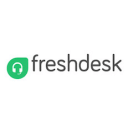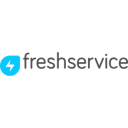Freshdesk vs Freshservice: Choosing the right solution for your business needs
- 01Freshdesk vs Freshservice: overview
- 02What's the difference between Freshdesk and Freshservice?
- 03Freshdesk pros and cons
- 04Freshservice pros and cons
- 05Freshdesk compared to Freshservice
- 06Freshservice compared to Freshdesk
- 07Features comparison
- 08Freshdesk vs Freshservice: Which is the best for your business?
- 09Promotions on Customer Support software
- 10Alternatives to Freshdesk & Freshservice
Access up to $20 savings on Freshdesk & $20 on Freshservice
Access up to $20 savings on Freshdesk & $20 on Freshservice
Effective IT and customer support are crucial for enhancing customer satisfaction and maintaining operational efficiency in a business. However, managing support requests and IT services manually can be a daunting and time-consuming task. This is where specialized software solutions like Freshdesk and Freshservice come into play. These platforms provide powerful tools to streamline support processes, whether for customer service teams or internal IT departments.
With numerous options available, selecting the right platform for your business needs can be challenging. In this article, we compare two popular solutions—Freshdesk and Freshservice. By examining their features, pricing structures, and key differences, you can determine which platform best suits your organization's requirements.
Freshdesk vs Freshservice: overview
Freshdesk and Freshservice are two leading solutions in the world of customer support software and IT service management, each offering a distinct set of features tailored to meet the needs of different organizations.
Freshdesk is renowned for its intuitive approach to customer support, providing tools such as ticket management, automation, and multi-channel support to enhance the efficiency of customer service teams. In contrast, Freshservice is designed specifically for IT service management (ITSM), offering features like incident management, change management, and asset management.
Now, let's explore the Freshdesk vs. Freshservice comparison to help you make an informed decision about which platform aligns best with your organization's customer support or IT service management needs.
What's the difference between Freshdesk and Freshservice?
Freshdesk and Freshservice are both offerings from Freshworks, tailored to enhance organizational efficiency through customer support and IT service management. Though they are part of the same suite, they cater to different operational needs within businesses. Understanding the differences between them is essential for selecting the right tool for your organization.
The primary distinction between Freshdesk and Freshservice lies in their focus areas. Freshdesk is designed specifically for customer support teams, providing features such as ticketing, multichannel communication (email, chat, phone, and social media), automation, and reporting. These features streamline customer interactions, making it easier for support teams to resolve issues efficiently and improve customer satisfaction. Freshdesk's intuitive interface and integration capabilities make it a popular choice for businesses seeking to enhance their customer support experience.
On the other hand, Freshservice is tailored for IT service management (ITSM). It offers specialized features like incident management, change management, asset management, and problem management. Freshservice helps IT teams manage internal service requests, track assets, and ensure compliance with ITIL processes. It provides a centralized platform for managing IT operations, making it an ideal solution for organizations looking to optimize their IT infrastructure and support.
Another key difference between the two platforms is their pricing models. Freshdesk offers a range of plans, starting with a free version for small teams, scaling up to more advanced options with additional features. Freshservice, while also offering a tiered pricing structure, typically aligns more with enterprise-level needs, reflecting the complexity and depth of its ITSM capabilities.
When choosing between Freshdesk and Freshservice, it's important to consider your organization's specific needs. Freshdesk is suitable for businesses focusing on customer engagement and support, while Freshservice is better suited for those needing comprehensive IT service management solutions.

14-day free trial on Freshdesk
Get 14-day free trial on Freshdesk and up to $20 savings with Secret.
Freshdesk pros and cons
What are the advantages of Freshdesk?
- Intuitive user interface: Freshdesk offers an easy-to-navigate interface that is user-friendly, making it simple for support agents to manage tickets and communicate with customers without extensive training.
- Multichannel support: Freshdesk integrates various communication channels such as email, phone, chat, and social media, allowing support teams to manage all customer interactions from a single platform.
- Automation and workflow customization: The platform provides robust automation features that enable users to automate repetitive tasks, set up ticket assignment rules, and customize workflows, increasing efficiency and productivity.
- Affordable pricing plans: Freshdesk offers a range of pricing plans, including a free tier for small teams, making it accessible to businesses of all sizes. The scalable pricing allows companies to choose a plan that best fits their budget and needs.
- Extensive integration options: Freshdesk integrates seamlessly with numerous third-party applications and services, such as CRM systems, payment gateways, and project management tools, enhancing its functionality and adaptability to various business environments.
What are the disadvantages of Freshdesk?
- Limited features on lower-tier plans: While Freshdesk offers a free version, many advanced features are only available in higher-tier plans, which may limit the functionality for smaller businesses or startups on a tight budget.
- Customization limitations: Although Freshdesk provides customization options, some users may find limitations in tailoring the platform to their specific needs, especially when compared to more customizable solutions.
- Occasional performance issues: Some users have reported occasional slow performance or downtime, which can affect the efficiency of the support team during peak times.
- Complex reporting features: While Freshdesk offers reporting and analytics, the complexity of setting up custom reports may be challenging for some users, requiring additional time to learn and utilize effectively.
- Customer support: Although Freshdesk is a support tool, some users have experienced slower response times or limited support options when seeking help from Freshdesk's customer service team.
Compare Freshdesk to other tools
Freshservice pros and cons
What are the advantages of Freshservice?
- Comprehensive ITSM features: Freshservice offers a robust set of IT service management features, including incident management, change management, asset management, and problem management, making it suitable for managing complex IT operations.
- User-friendly interface: The platform is known for its intuitive and clean interface, which makes it easy for IT teams to navigate and use without extensive training, reducing the learning curve for new users.
- Automation and workflow capabilities: Freshservice provides powerful automation tools that help streamline repetitive tasks and processes, such as ticket routing and approvals, increasing operational efficiency and freeing up IT staff for more strategic work.
- Asset and configuration management: With built-in asset management, Freshservice allows organizations to track and manage their IT assets and configurations effectively, providing visibility into the hardware and software inventory.
- Scalable pricing plans: Freshservice offers a variety of pricing tiers to cater to different business sizes and needs, allowing companies to choose a plan that aligns with their budget and IT management requirements.
What are the disadvantages of Freshservice?
- Limited customization: Although Freshservice offers various features, some users find the customization options limited compared to other ITSM tools, which may affect the ability to tailor the platform to specific organizational needs.
- Pricing for advanced features: While the basic plans are affordable, access to advanced features and integrations requires higher-tier plans, which can increase costs for businesses needing those capabilities.
- Reporting complexity: Although Freshservice includes reporting tools, creating custom reports can be complex and may require additional time and expertise to leverage effectively, potentially limiting insights for some users.
- Integration challenges: While Freshservice integrates with many applications, some users have reported difficulties with setting up and maintaining integrations, which can impact workflow efficiency.
- Customer support: Some users have experienced delays in response times or difficulties in resolving issues when contacting Freshservice's customer support, which can be frustrating during critical incidents.
Compare Freshservice to other tools
Freshdesk compared to Freshservice
Freshdesk and Freshservice, both products of Freshworks, cater to different organizational needs. Freshdesk focuses on customer support, offering features such as ticket management, multichannel support, and automation tools to streamline interactions with clients. It is ideal for businesses seeking to enhance their customer engagement and service efficiency.
In contrast, Freshservice is designed for IT service management, providing tools like incident and change management, asset tracking, and ITIL compliance. This platform is suited for IT departments aiming to optimize internal processes and manage IT infrastructure.
Is Freshdesk better than Freshservice?
Determining whether Freshdesk is better than Freshservice depends on your organization's specific needs. Freshdesk excels in customer support, offering robust features that improve communication with clients and enhance service delivery, making it ideal for companies prioritizing customer interaction and satisfaction. Its user-friendly interface and comprehensive support capabilities cater well to businesses seeking efficient ticket management and multichannel communication.
On the other hand, Freshservice is more suitable for IT service management, providing comprehensive tools that align with ITIL standards to optimize internal IT operations. For businesses focusing on streamlining IT processes and infrastructure management, Freshservice offers specialized features that Freshdesk does not.
What is Freshdesk best used for?
Freshdesk is best used for enhancing customer support and engagement by providing a centralized platform for managing customer interactions. It streamlines the process of handling inquiries, complaints, and requests through its robust ticketing system, which allows support teams to track, prioritize, and resolve customer issues efficiently.
Freshdesk's multichannel support capabilities enable businesses to connect with customers via email, chat, phone, and social media, ensuring seamless communication. Its automation features help reduce manual tasks by automating routine processes, improving team productivity. Additionally, Freshdesk offers insightful analytics and reporting tools, enabling businesses to monitor performance and customer satisfaction effectively.
Can Freshdesk replace Freshservice?
Freshdesk and Freshservice are designed for different purposes, so Freshdesk cannot fully replace Freshservice. Freshdesk is tailored for customer support, offering features like ticketing, multichannel communication, and customer interaction management. It excels at helping businesses manage customer queries and enhance service efficiency.
In contrast, Freshservice is specifically developed for IT service management (ITSM), focusing on internal IT operations with features such as incident, problem, and asset management, as well as ITIL compliance. While both platforms share some overlapping features, Freshdesk lacks the specialized IT management capabilities of Freshservice, making it unsuitable as a complete replacement for IT service needs.
Is Freshdesk cheaper than Freshservice?
Freshdesk and Freshservice have different pricing structures that reflect their distinct functionalities. Freshdesk generally offers more affordable plans, including a free tier, which makes it accessible to small businesses and startups focusing on customer support. Its pricing is tiered based on features such as automation and reporting, which allows businesses to select plans according to their needs and budget.
In contrast, Freshservice, designed for IT service management, typically comes with higher starting prices due to its comprehensive ITIL-aligned features like incident management and asset tracking. Therefore, Freshdesk’s pricing plans are usually cheaper than Freshservice, especially for organizations primarily needing customer support solutions.
Is there a better Customer Support software than Freshdesk?
When evaluating customer support software, it's essential to consider whether an alternative to Freshdesk might better suit your specific needs.
Some prominent alternatives to Freshdesk include Zendesk, Help Scout, Zoho Desk, Intercom, and Salesforce Service Cloud. The choice of a customer support platform depends on your organization's unique requirements, such as the complexity of your support processes, integration with existing tools, customization needs, and budget constraints. While Freshdesk is praised for its intuitive interface and multichannel support, other tools may offer more advanced automation, deeper customization options, or specific features tailored to industry-specific challenges.
14-day free trial on Freshdesk
Get 14-day free trial on Freshdesk and up to $20 savings with Secret.
Freshservice compared to Freshdesk
Freshservice and Freshdesk, both from Freshworks, serve distinct purposes within an organization. Freshservice is designed for IT service management, offering features such as incident, problem, change, and asset management, making it ideal for internal IT operations. It helps IT teams manage service requests and ensure efficient IT infrastructure management.
In contrast, Freshdesk is focused on customer support, providing ticketing, multichannel communication, and automation tools to enhance customer service interactions. It is tailored for businesses looking to improve customer engagement and satisfaction. While they share some similarities, the primary difference lies in their focus: Freshservice for IT management and Freshdesk for customer support.
Is Freshservice better than Freshdesk?
Determining whether Freshservice is better than Freshdesk depends on the specific needs of your organization. Freshservice excels in IT service management by providing comprehensive tools for managing internal IT operations, such as incident tracking and asset management. It is ideal for companies focused on optimizing IT processes and ensuring the efficient management of technology resources.
However, Freshdesk is more suitable for organizations prioritizing customer support, offering features that enhance customer interactions and streamline communication across multiple channels.
What is Freshservice best used for?
Freshservice is best used for managing IT service operations within an organization. It is specifically designed to support IT teams in handling various IT service management (ITSM) processes, such as incident management, problem management, change management, and asset management.
Freshservice provides a centralized platform for tracking and resolving IT issues, ensuring compliance with ITIL standards, and optimizing IT workflows. It helps organizations streamline their IT operations by automating repetitive tasks, improving response times, and maintaining an organized inventory of IT assets. Its user-friendly interface and robust capabilities make it an excellent choice for enhancing IT service delivery and support.
Can Freshservice replace Freshdesk?
Freshservice cannot fully replace Freshdesk because they are designed for different functions within an organization. Freshservice is tailored for IT service management, focusing on internal IT operations with features like incident management, change management, and asset tracking, which are essential for maintaining and supporting IT infrastructure.
Conversely, Freshdesk is built for customer support, offering capabilities such as ticketing, multichannel communication, and customer engagement tools. It is specifically geared toward managing external customer interactions and improving service efficiency. While both platforms share some features, Freshservice lacks the customer-focused capabilities of Freshdesk, making it unsuitable as a complete replacement for customer support needs.
Is Freshservice cheaper than Freshdesk?
Freshservice and Freshdesk have different pricing models due to their distinct functions, which can affect their cost comparison. Freshdesk generally offers a broader range of pricing tiers, starting with a free plan for small customer support teams, making it accessible for various budget levels. Freshservice, designed for IT service management, typically has higher starting prices due to its specialized ITSM features like asset management and ITIL compliance.
While both platforms offer scalable pricing based on features and user needs, Freshdesk is often cheaper for businesses focused solely on customer support, whereas Freshservice’s pricing plans may require a higher investment for IT management capabilities.
Is there a better IT Management software than Freshservice?
When evaluating alternatives to Freshservice, it's important to determine if there is a platform that better suits your specific IT service management needs.
Some notable competitors to Freshservice in the ITSM space include ServiceNow, Jira Service Management, BMC Helix, SolarWinds Service Desk, ServiceNow, and Zendesk. The choice of an IT service management platform depends on your organization's unique requirements, such as the complexity of IT operations, integration capabilities, and budget constraints. While Freshservice offers a user-friendly interface and robust ITIL-compliant features, other platforms might provide more advanced customization options, deeper integration with existing IT ecosystems, or specialized capabilities for large-scale enterprise environments.
14-day free trial on Freshservice
Get 14-day free trial on Freshservice and up to $20 savings with Secret.
Features comparison
Freshservice Excels Over Freshdesk with Its Self-Service Portal
Freshservice excels over Freshdesk by offering a robust self-service portal that empowers customers to independently troubleshoot and resolve issues. This portal provides access to a comprehensive knowledge base, FAQs, and user guides, enabling customers to find solutions without contacting support. For instance, users can search for common issues and follow step-by-step guides to resolve them, significantly reducing the number of support tickets and freeing up time for the support team to focus on more complex queries.
While Freshdesk provides autonomy through chatbots and widgets that automate initial interactions, it lacks a dedicated self-service portal. Freshdesk's approach does not fully facilitate customer independence, as it primarily focuses on enhancing interactions rather than enabling self-resolution. This makes Freshservice a superior choice for organizations prioritizing customer empowerment and reducing support workload through effective self-service options.
Freshservice Excels Over Freshdesk with ITIL-Aligned IT Service Management
Freshservice excels in IT Service Management (ITSM) with its ITIL-aligned service management software, providing a structured framework for IT operations. This alignment ensures that IT services are delivered efficiently and effectively, using best practices in areas such as incident management, change management, and asset management. Freshservice's platform allows organizations to consolidate and streamline all IT services, enabling IT departments to manage requests and issues systematically.
For example, when an incident occurs, Freshservice facilitates a structured workflow to identify, address, and resolve the issue while tracking its impact on business operations. In contrast, Freshdesk focuses primarily on customer support and lacks the ITIL alignment and depth in ITSM processes that Freshservice offers. This makes Freshservice particularly advantageous for companies needing robust IT infrastructure management, enabling them to enhance operational efficiency and reduce downtime through proven ITIL methodologies.
Freshdesk Outshines Freshservice in User-Friendliness for Customer Support
Navigating the world of customer support software can be complex, but Freshdesk excels in ease of use. Its intuitive interface and straightforward setup process enable businesses of all sizes to quickly integrate Freshdesk into their workflow without the need for extensive training.
Unlike Freshservice, which features a more intricate dashboard tailored for IT service management with tools like incident and change management, Freshdesk focuses on providing a user-friendly experience. Its design prioritizes simplicity and accessibility, making it an ideal choice for entrepreneurs and small businesses seeking a seamless transition into using support software. Freshdesk’s streamlined approach allows teams to efficiently manage customer inquiries, leveraging features such as automated ticketing, multichannel support, and collaboration tools without overwhelming users with unnecessary complexity. This simplicity helps businesses focus on growing their operations while maintaining excellent customer service.
Freshdesk Leads Freshservice in Third-Party Integrations
While both Freshdesk and Freshservice offer extensive integration possibilities with various third-party applications, Freshdesk holds a distinct advantage in this comparison. Freshdesk supports a broad array of integrations, including popular customer relationship management (CRM) tools like Salesforce and HubSpot, communication platforms such as Slack and Microsoft Teams, and e-commerce solutions like Shopify. This wide range of integrations allows businesses to seamlessly connect Freshdesk with their existing tech stack, enhancing workflow efficiency and data synchronization.
In contrast, Freshservice, while robust in IT service management integrations, primarily focuses on IT operations tools and lacks the broader application connectivity found in Freshdesk. This makes Freshdesk a more versatile option for businesses looking to unify their customer support operations with other business processes, ensuring that customer interactions are managed efficiently across multiple platforms.
Freshdesk Surpasses Freshservice in Advanced Ticket Management
Freshdesk stands out for its cutting-edge system of managing customer tickets, offering superior functionality compared to Freshservice. Freshdesk combines all customer inquiries and tickets received from various platforms—such as email, chat, social media, and phone—into a single, unified inbox. This centralized system allows support teams to efficiently manage and prioritize tickets, execute predefined responses, and automate actions, such as routing and escalation based on predefined rules. For example, repetitive queries can be automatically assigned to specific agents or resolved using canned responses, significantly enhancing response times and reducing manual effort.
In contrast, Freshservice, while proficient in handling internal IT requests, lacks the same level of integration and automation for external customer interactions. This makes Freshdesk a more powerful tool for businesses aiming to optimize their customer support operations and ensure a seamless, efficient workflow across multiple communication channels.
Both Freshdesk and Freshservice Offer Comprehensive Reporting Capabilities
Both Freshdesk and Freshservice provide robust reporting features that empower organizations to gain insights and improve their operations. Freshdesk offers customized performance reports that allow support teams to track metrics such as ticket response times, agent productivity, and customer satisfaction. Users can tailor these reports to focus on specific data points and schedule recurring deliveries directly to their inbox, ensuring regular updates and insights into customer service performance.
Conversely, Freshservice provides advanced reporting and analysis tools designed for IT service management. It offers detailed insights into IT operations, such as incident resolution times, asset utilization, and change management processes. These reports help IT teams make informed decisions and improve service delivery by identifying trends and areas for improvement. For instance, Freshservice can generate reports that highlight recurring IT issues, enabling proactive solutions.
Freshdesk Excels Over Freshservice in Measuring Customer Satisfaction
Freshdesk's capability to enhance customer satisfaction takes the lead due to its integrated survey tools, which are pivotal in assessing customer contentment following each resolution. After a ticket is closed, Freshdesk automatically sends out surveys that prompt customers to rate their experience and provide feedback. For example, customers might receive a survey asking them to rate their support interaction on a scale from 1 to 5 and to comment on areas for improvement. This feedback loop ensures continuous service enhancements by allowing support teams to identify trends, address issues, and implement strategic changes to improve service quality.
In contrast, Freshservice lacks an explicit feature dedicated to measuring customer satisfaction, focusing more on internal IT service metrics. This absence of direct customer feedback mechanisms gives Freshdesk a competitive edge, making it a more suitable choice for organizations seeking to proactively gauge and enhance customer satisfaction levels.
Subscribe to our newsletters.
No FOMO here. Stay up-to-date on all the latest deals and news with our monthly newsletter straight to your inbox like 127,000+ entrepreneurs (+ Get 10% off on on our Premium Membership!)
Freshdesk vs Freshservice: Which is the best for your business?
Freshdesk is the best tool for you if:
- You need a user-friendly platform that allows support agents to manage customer inquiries seamlessly across multiple channels such as email, chat, phone, and social media from one centralized interface.
- Your organization benefits from customizable automated workflows that streamline repetitive tasks, ensuring that support teams can focus on resolving customer issues promptly and improving overall service efficiency.
- You require integration with a variety of third-party applications, including CRM systems, e-commerce platforms, and communication tools, to enhance your support operations and provide a cohesive customer experience.
- Access to detailed analytics and reporting tools is essential for tracking team performance, customer satisfaction, and identifying areas for improvement to optimize support strategies continuously.
- Your business demands a cost-effective solution with scalable pricing plans, including a free tier for small teams, allowing you to grow and adapt as your support needs evolve.
Freshservice is the best tool for you if:
- You need an IT service management tool that aligns with ITIL standards, providing robust incident, problem, change, and asset management to streamline IT operations and ensure efficient service delivery.
- Your organization requires advanced automation capabilities to reduce manual tasks and improve IT workflow efficiency, allowing teams to focus on strategic initiatives and complex problem-solving.
- Tracking and managing IT assets is crucial for your operations, and Freshservice’s asset management feature provides comprehensive visibility and control over hardware and software inventory.
- You seek a platform with strong analytics and reporting tools to monitor IT performance, identify trends, and make data-driven decisions to enhance IT service delivery.
- Integration with various IT and business tools is important to your workflow, allowing seamless connection with applications like Jira, Slack, and Office 365 for improved collaboration and efficiency.

14-day free trial on Freshdesk
Get 14-day free trial on Freshdesk and up to $20 savings with Secret.
Alternatives to Freshdesk & Freshservice
Promotions on Customer Support software
Start saving on the best SaaS with Secret.
Secret has already helped tens of thousands of startups save millions on the best SaaS like Freshdesk, Freshservice & many more. Join Secret now to buy software the smart way.


















